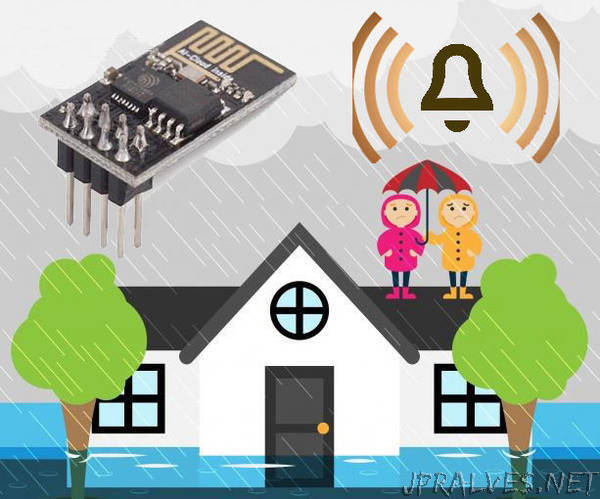
“In this instructable, I will show you how to build wifi flood/water sensor with minimal cost. The entire project costs me less than $8 for parts that I acquire from ebay and my existing spare-parts.
In this project, we will use ESP-01 to provide Wifi and MQTT client to detect presence of water, and optionally use directly connected speaker/buzzer to provide localized alarm.
My specific application for project is to detect flood/water inside my sump pump well, in the case of sump pump failure. When water is detected by 2 open wires, it would send message to MQTT broker. MQTT broker would then relays the message to NodeRED. Upon receiving MQTT message, NodeRED would send announcement to multiple google home devices and also optionally send message to cellphone/browser via pushbullet
Now of course this project would only works if home electricity is ON. In the next instructable I will integrate the battery backup circuit. But if you make the power supply the same way I did, you can just plug in a USB power-bank for battery backup. If you have a power-bank that let you charge and supply power at the same time, then you’re all set.
I use RaspberryPi ZeroW to host Mosquitto MQTT server and NodeRED. It has been running for over a year without any issue.
References:Raspberry Pi:http://www.switchdoc.com/2016/02/tutorial-installi…Install NodeRED on Raspberry Pi: https://nodered.org/docs/hardware/raspberrypi”
- How to Build Your 1st Circuit
#PCB
fkvbwrsjnccyu7d.medium.jpg
“Building your own circuits can seem like a daunting task. Circuit diagrams look like hieroglyphics and all those electronic parts make absolutely no sense.
_I have put this Instructable together to hopefully help and guide you to ultimately build your own circuits. The 10 tips in this Instructable are ones that I have picked-up over the years through much trial and error. Im no expert (the great thing is you dont have to be an expert to learn how to create circuits!) so please dont expect this Instructable to be a complete guide. Rather, I hope its used to help anyone who is interested in learning about electronics and circuits, to pick up a soldering iron and get started.
Please feel free to add any comments or tips that you may have in comments section.
Note: gifs don’t work too well when there is something flashing so it’s a little hard to show the circuit in action.”
